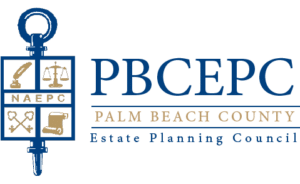
The United States is one of the most philanthropic countries in the world, but we still have a large population that struggles with poverty, addiction, mental health, food insecurity and lack of affordable housing. In Palm Beach County alone, there are over 7,800 nonprofits. The issues are discussed, debated, action plans are created and funded, yet community problems persist. How can we change philanthropic giving so that it creates sustainable and impactful change?
During my 22-year career in the finance industry, I advised clients on their philanthropic giving strategies. Since 2005, I have been volunteering on nonprofit boards, so it was always an easy conversation for me to have because of my personal experience seeing the impact from philanthropy. In 2022, I decided to dedicate myself fulltime to working in the nonprofit industry and align my passion and career. It has been an educational experience as I learned how nonprofits work from the inside out, how government funds are allocated, how decisions are made about programming, collaborations or lack thereof, and overall funding needs to solve community issues. In a short period of time, I have learned, and continue to learn a lot about the process of solving community issues and some of the roadblocks that exist.
Here are some tips that I wanted to share based on my experience:
- If you want to maximize the impact of your donation, don’t make the contribution too restrictive. Many donors think they completely understand an issue and the way to solve it, so they restrict the gift to a specific process or program. The reality on the ground is usually very different. By placing too many restrictions on gifts, it doesn’t allow the nonprofit to use the funding in the most appropriate way based on the ever-changing needs of the community. Flexibility is sometimes required as circumstances change. Many nonprofits are not comfortable reaching out to the donor to get an exception for the funds to be used in a different manner. It is best to keep the door open and provide some leeway in the process. Remember, these nonprofits are seeing and experiencing the problems firsthand and understand the nuances better than most. As the donor, if you feel a different approach is required, partner with the nonprofit to implement a program you both mutually agree upon based on research. Volunteer to work on a project, attend meetings, seminars, etc. to learn as much as possible about the issues you are working on to resolve.
- If you can, encourage nonprofit organizations to collaborate by funding projects that involve two or more nonprofits. With resources and labor shortages, it is important to maximize the efficiency and effectiveness of the funding. That usually involves a coordinated effort between organizations with programs that complement each other. For example, a food bank working with a housing and a mental health provider. A holistic approach to solving an issue vs only focusing on one aspect of an issue. If you don’t meet the basic needs of clients in the program, they will have a hard time focusing on solving their personal problems. Just like a student can’t focus on a lesson in class if they have not eaten.
- Most nonprofits do not ask for enough funding for critical programs and ask for what they feel they can get vs what they need to fund the solution. If you are interested in solving problems, interview the nonprofit and ask questions about solutions-based work. As a partner, you should understand the scope of the problem, potential solutions and amount needed for the program and ongoing expenses. A good example is housing. If a nonprofit needs funding for rental assistance but the program does not focus on mental health counseling, financial education, healthy eating habits, job training, etc., then the funds will help the client get into a home but they might not be able to sustain it. Not every nonprofit works in a holistic manner, which is fine, but they should be partnering with organizations that can provide the additional services needed.
- There has always been a debate about charitable giving during life vs after you have passed away. If you give it away during your life, you can experience the joy and witness the impact you are making. It enriches your life, fills your soul with goodness and you might get invited to some cool events. The other upside is that you can see if your money is doing the good work which you intended it do and modify as needed. The opposite is true if you give it away after you have already passed away. You can always do both. Give some during life and include charitable gifts in your estate plan.
However you decide to give, make it impactful!
Domenick V. Macri, Sr., AEP is the Vice President of Philanthropic Development at Gulfstream Goodwill Industries. Gulfstream Goodwill is an association of Goodwill International that has locations across 5 counties (Palm Beach, Martin, Okeechobee, St. Lucie and Indian River). Please visit www.goggi.org for more information about our services.
